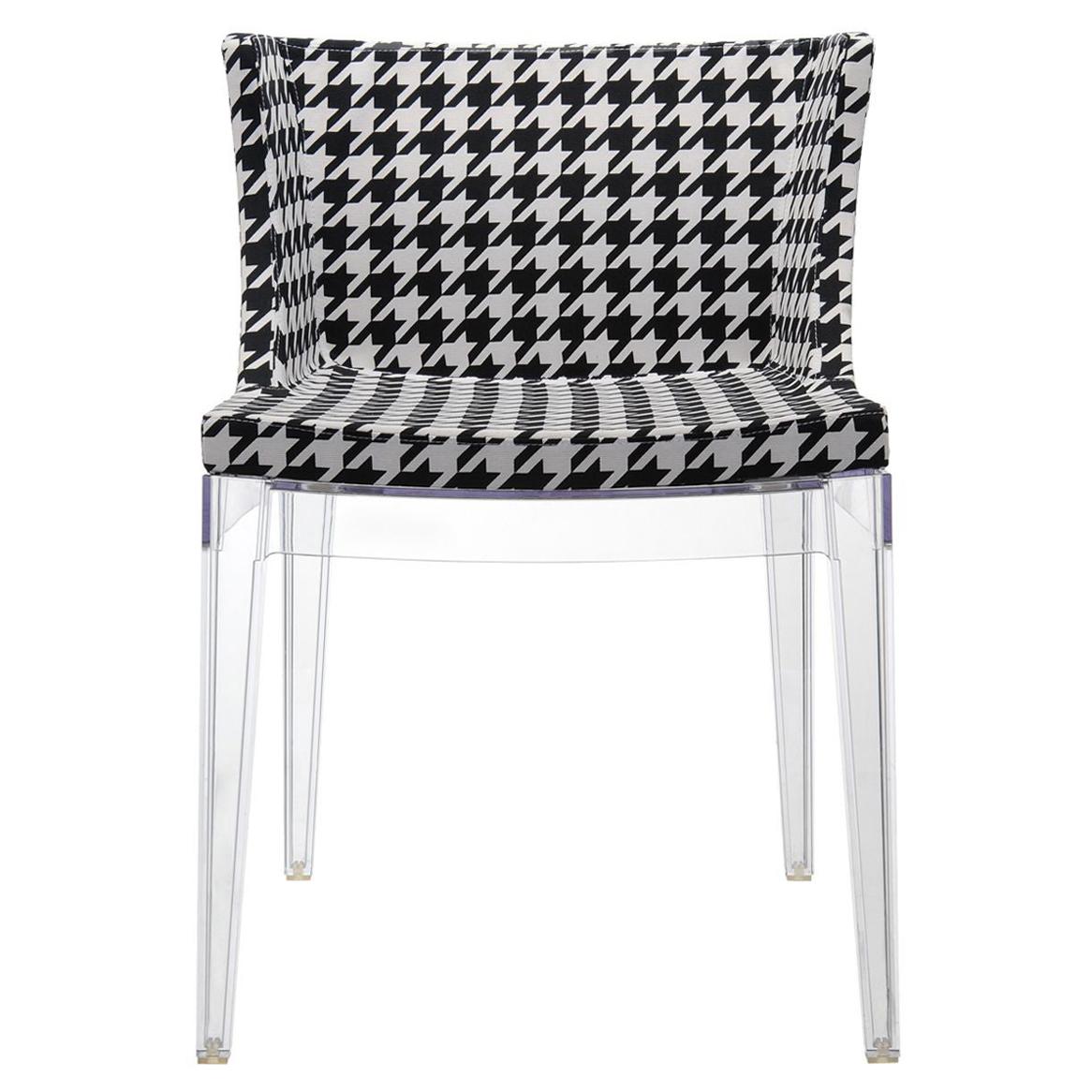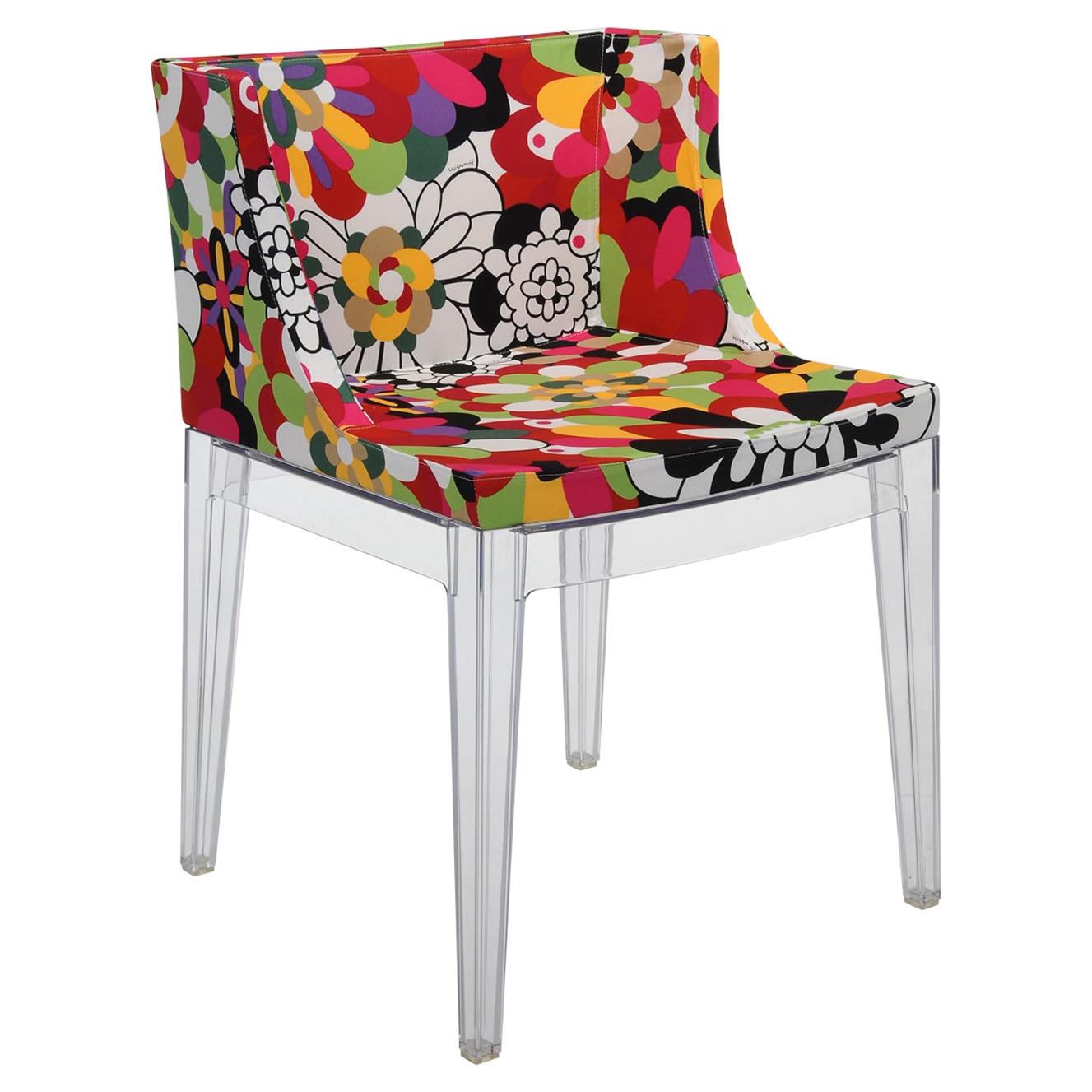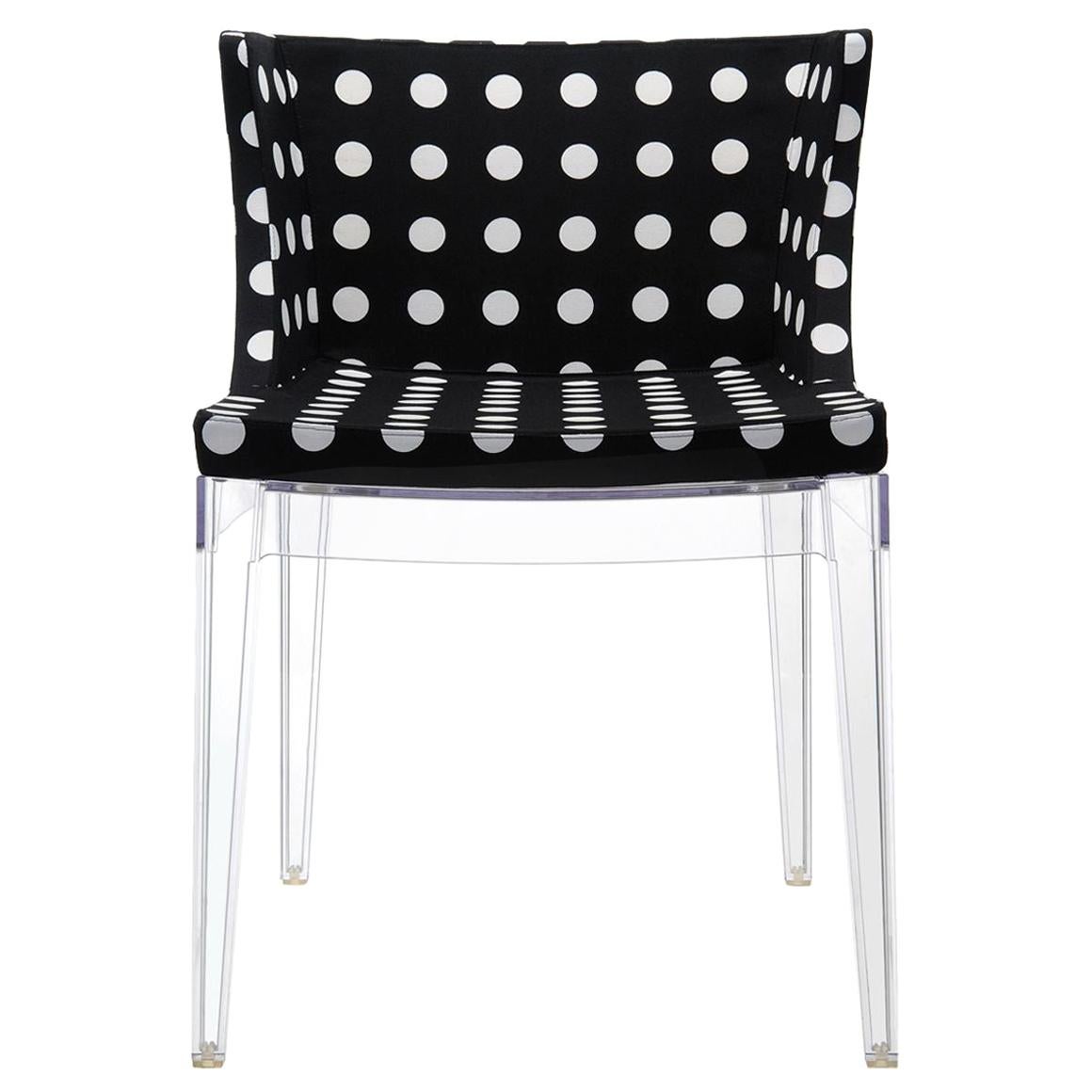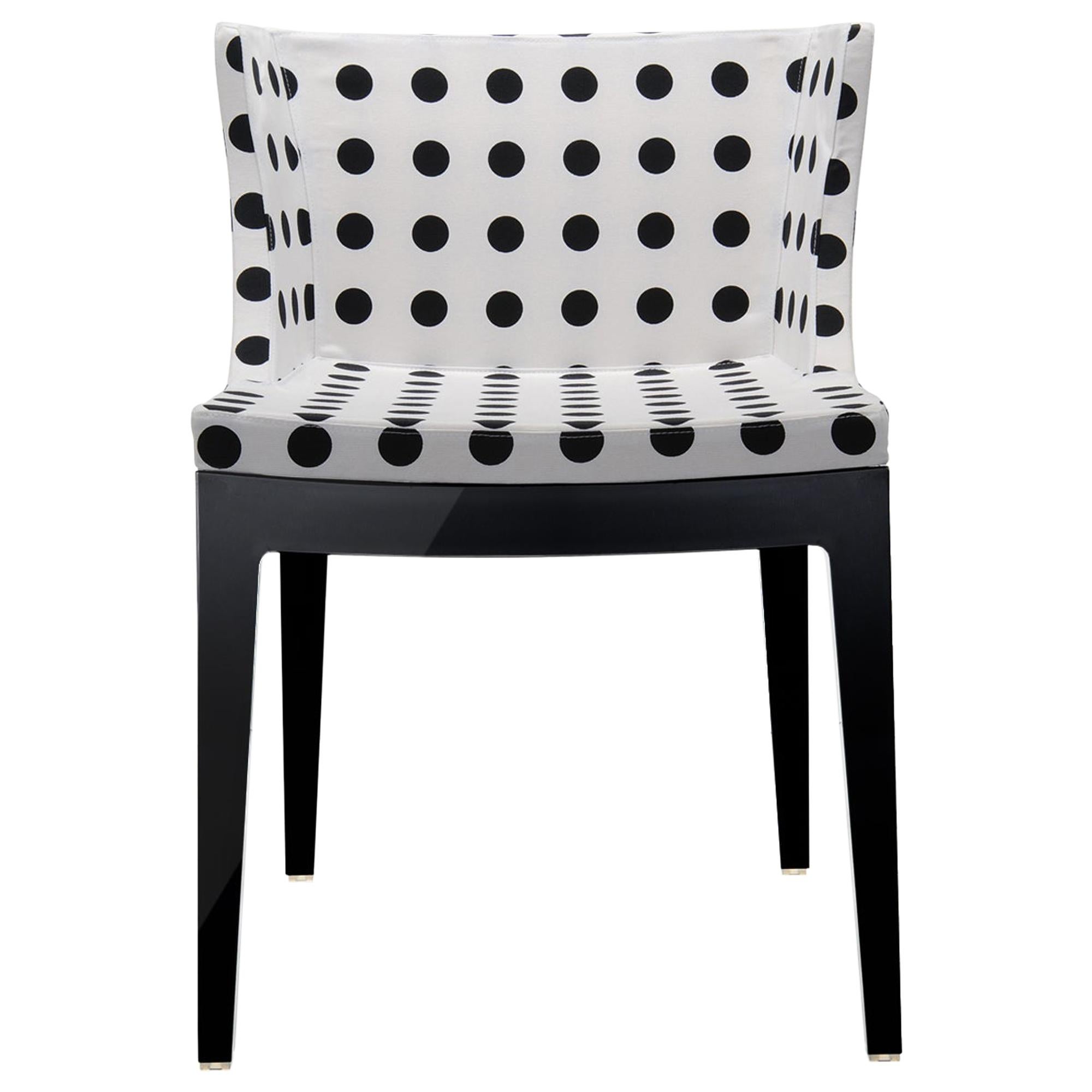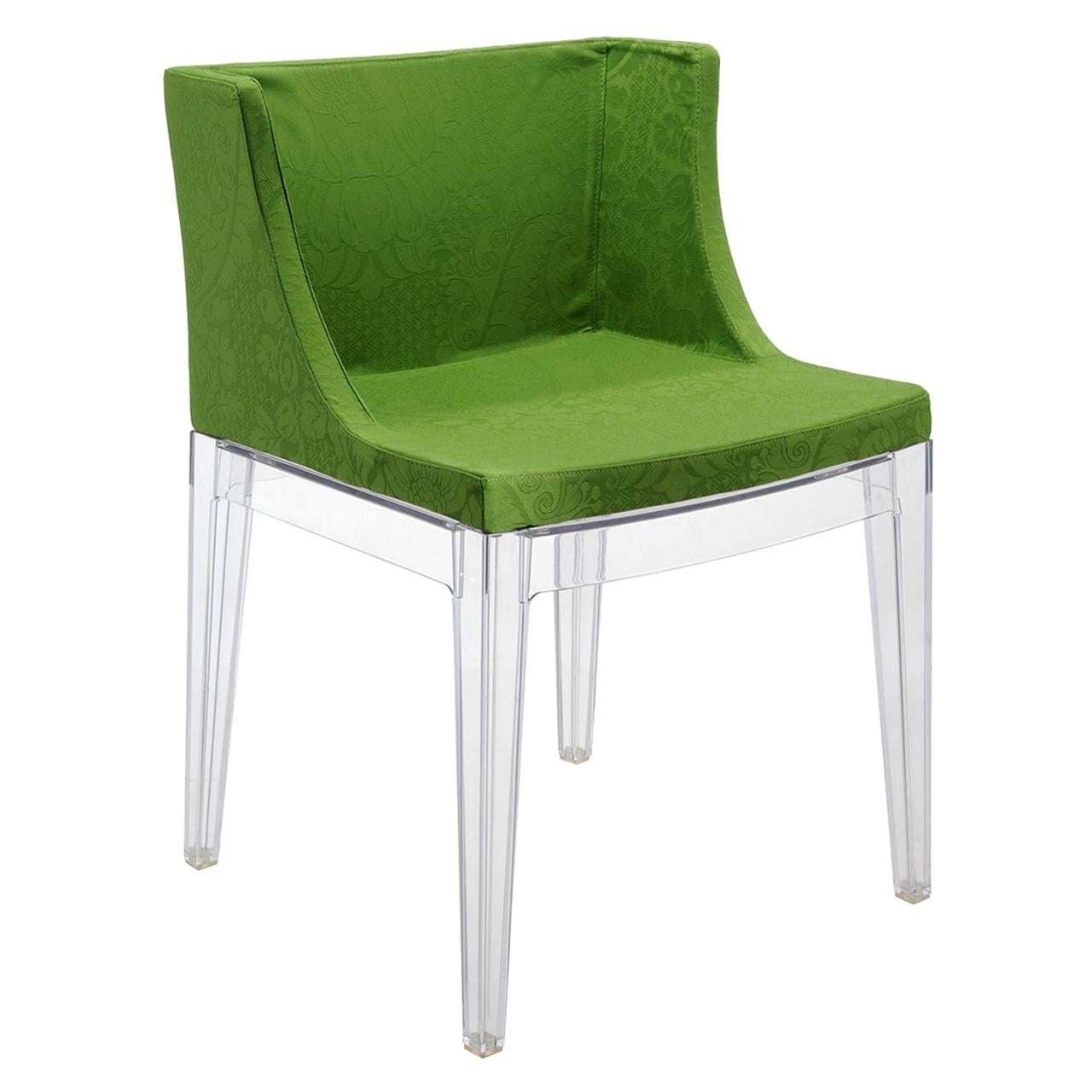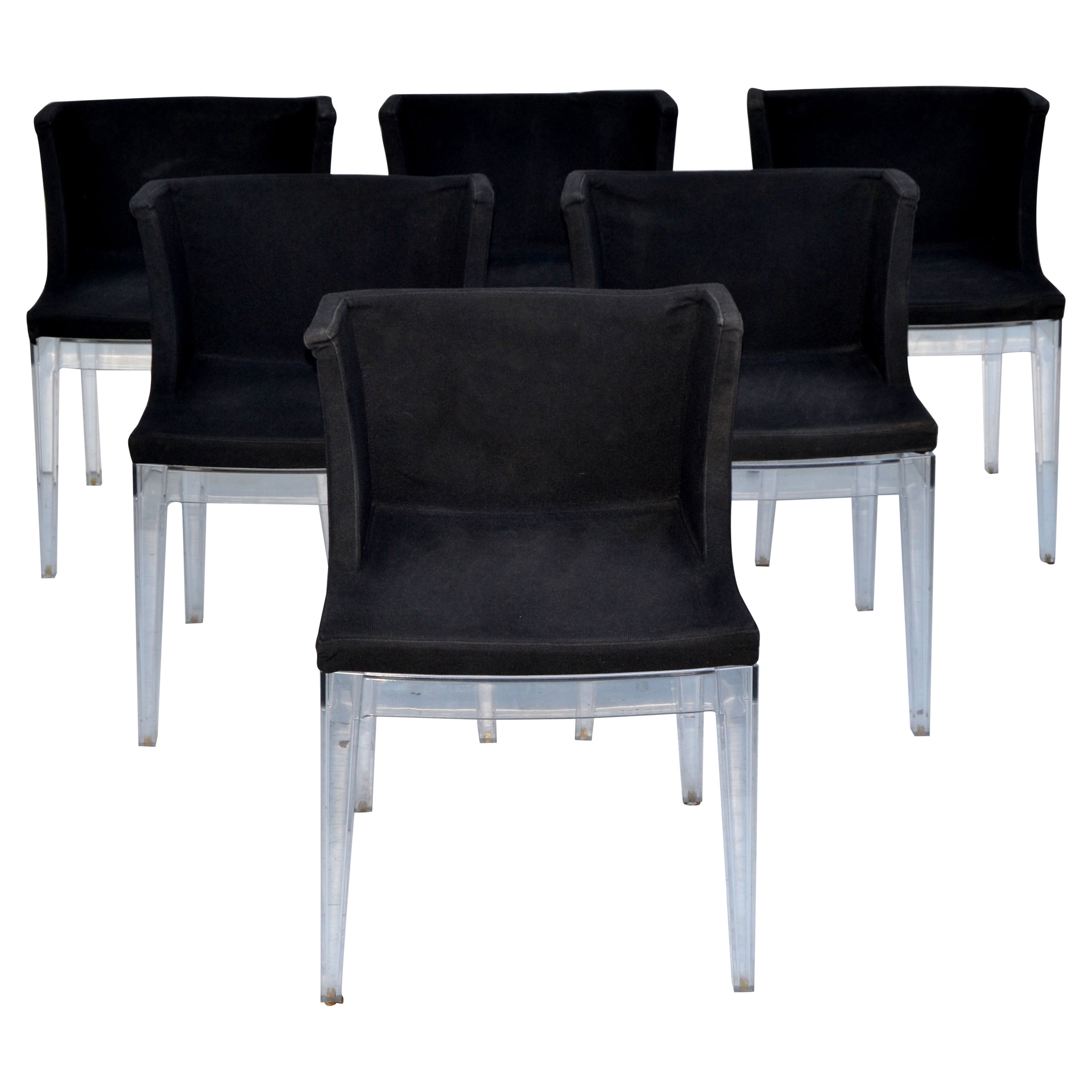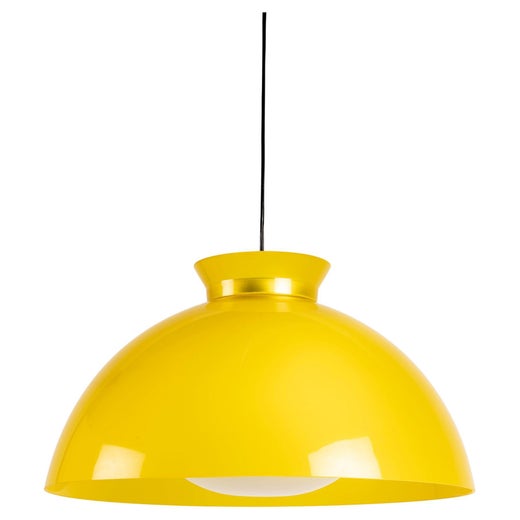Original Mademoiselle Leather Chairs by Philippe Starck for Kartell - Set of 5
About the Item
- Creator:Kartell (Designer),Philippe Starck (Artist)
- Dimensions:Height: 30.7 in (77.98 cm)Width: 20.7 in (52.58 cm)Depth: 15 in (38.1 cm)Seat Height: 19.5 in (49.53 cm)
- Sold As:Set of 5
- Materials and Techniques:
- Place of Origin:
- Period:
- Date of Manufacture:Unknown
- Condition:Wear consistent with age and use. Vintage condition corresponding with age. Please observe the pictures carefully.
- Seller Location:Bridgeport, CT
- Reference Number:
Kartell
The Italian design giant Kartell transformed plastic from the stuff of humble household goods into a staple of luxury design in the 1960s. Founded in Milan by Italian chemical engineer Giulio Castelli (1920–2006) and his wife Anna Ferrieri (1918–2006), Kartell began as an industrial design firm, producing useful items like ski racks for automobiles and laboratory equipment designed to replace breakable glass with sturdy plastic. Even as companies like Olivetti and Vespa were making Italian design popular in the 1950s, typewriters and scooters were relatively costly, and Castelli and Ferrieri wanted to provide Italian consumers with affordable, stylish goods.
They launched a housewares division of Kartell in 1953, making lighting fixtures and kitchen tools and accessories from colorful molded plastic. Consumers in the postwar era were initially skeptical of plastic goods, but their affordability and infinite range of styles and hues eventually won devotees. Tupperware parties in the United States made plastic storage containers ubiquitous in postwar homes, and Kartell’s ingenious designs for juicers, dustpans, and dish racks conquered Europe. Kartell designer Gino Colombini was responsible for many of these early products, and his design for the KS 1146 Bucket won the Compasso d’Oro prize in 1955.
Buoyed by its success in the home goods market, Kartell introduced its Habitat division in 1963. Designers Marco Zanuso and Richard Sapper created the K1340 (later called the K 4999) children’s chair that year, and families enjoyed their bright colors and light weight, which made them easy for kids to pick up and move. In 1965, Joe Colombo (1924–78) created one of Kartell’s few pieces of non-plastic furniture, the 4801 chair, which sits low to the ground and comprised of just three curved pieces of plywood. (In 2012, Kartell reissued the chair in plastic.) Colombo followed up on the success of the 4801 with the iconic 4867 Universal Chair in 1967, which, like Verner Panton’s S chair, is made from a single piece of plastic. The colorful, stackable injection-molded chair was an instant classic. That same year, Kartell introduced Colombo’s KD27 table lamp. Ferrierei’s cylindrical 4966 Componibili storage module debuted in 1969.
Kartell achieved international recognition for its innovative work in 1972, when a landmark exhibition curated by Emilio Ambasz called “Italy: The New Domestic Landscape” opened at New York’s Museum of Modern Art. That show introduced American audiences to the work of designers such as Gaetano Pesce; Ettore Sottsass, founder of the Memphis Group; and the firms Archizoom and Superstudio (both firms were among Italy's Radical design groups) — all of whom were using wit, humor and unorthodox materials to create a bracingly original interior aesthetic.
Castelli and Ferrieri sold Kartell to Claudio Luti, their son-in-law, in 1988, and since then, Luti has expanded the company’s roster of designers.
Kartell produced Ron Arad’s Bookworm wall shelf in 1994, and Philippe Starck’s La Marie chair in 1998. More recently, Kartell has collaborated with the Japanese collective Nendo, Spanish architect Patricia Urquiola and glass designer Tokujin Yoshioka, among many others. Kartell classics can be found in museums around the world, including MoMA, the Victoria and Albert Museum and the Cooper Hewitt, Smithsonian Design Museum. In 1999, Claudio Luti established the Museo Kartell to tell the company’s story, through key objects from its innovative and colorful history.
Find vintage Kartell tables, seating, table lamps and other furniture on 1stDibs.
Philippe Starck
A ubiquitous name in the world of contemporary architecture and design, Philippe Starck has created everything from hotel interiors and luxury yachts to toothbrushes and teakettles. Yet for every project in his diverse portfolio, Starck has maintained an instantly recognizable signature style: a look that is dynamic, sleek, fluid and witty.
The son of an aircraft engineer, Starck studied interior design at the École Nissim de Camondo in Paris. He started his design career in the 1970s decorating nightclubs in the city, and his reputation for spirited and original interiors earned him a commission in 1983 from French president François Mitterrand to design the private apartments of the Élysée Palace. Starck made his name internationally in 1988 with his design for the interiors of the Royalton Hotel in New York, a strikingly novel environment featuring jewel-toned carpeting and upholstery and furnishings with organically shaped cast-aluminum frames. He followed that up in 1990 with an equally impressive redesign of the Paramount Hotel in Manhattan, a project that featured over-scaled furniture as well as headboards that mimicked Old Masters paintings.
Like their designer, furniture pieces by Starck seem to enjoy attention. Designs such as the wedge-shaped J Series club chair; the sweeping molded-mahogany Costes chair; the provocative Ara table lamp; or the sinuous WW stool never fail to raise eyebrows. Other Starck pieces make winking postmodern references to historical designs. His polycarbonate Louis Ghost armchair puts a new twist on Louis XVI furniture; his Out-In chair offers a futuristic take on the classic English high-back chair. But for all his flair, Starck maintains a populist vision of design. While one of his limited-edition Prince de Fribourg et Treyer armchairs might be priced at $7,000, a plastic Starck chair for the Italian firm Kartell is available for around $250. As you will see on 1stDibs, Philippe Starck’s furniture makes a bold statement — and it can add a welcome bit of humor to even the most traditional decor.
- ShippingRetrieving quote...Ships From: Bridgeport, CT
- Return PolicyA return for this item may be initiated within 2 days of delivery.
- Italian Maui Pale Blue Side Chairs Vico Magistretti for Kartell - Set of 12By Kartell, Vico MagistrettiLocated in Bridgeport, CTDimensions: H 30.2" / W 18" / D 16.4" Height from floor to seat: 19.5" Back height: 15.8" Highly desirable original set of 12 Italian MAUI Matte Pale Blue Side Dining Chairs designe...Category
Vintage 1980s Italian Industrial Side Chairs
MaterialsSteel, Chrome
- Eero Saarinen Styled Contemporary Dining Chairs - Set of 6By Eero SaarinenLocated in Bridgeport, CTDimensions: H 80 cm / W 48 cm / D 40cm Height from floor to seat: 47 cm H 31,4" / W 18,8" / D 15,7" / Height from fllor to seat: 18,5" Set of six reupholstered dining chairs in the ...Category
Vintage 1970s Belgian Mid-Century Modern Dining Room Chairs
MaterialsChrome
- French Vintage Square Back Dining Chairs - Set of 6Located in Bridgeport, CTDimensions: H 106 cm / W 48 cm / D 45 cm Height from floor to seat: 48 cm H 41.7" / W 18.8" / D 17.7" Height from floor to seat: 18.8" High-Quality Set of 6 solid wood French vintag...Category
Mid-20th Century French Dining Room Chairs
MaterialsUpholstery, Wood
- French Country Splat Back Dining Chairs, Reupholstered - Set of 4Located in Bridgeport, CTDimensions: W 17" / D 15.6" / H 34.5" Height from floor to seat: 20.5" Back height: 16.8" A wonderful set of 4 French Country Styled side dining chairs. Beautifully lacquered solid ...Category
Mid-20th Century French Mid-Century Modern Dining Room Chairs
MaterialsUpholstery, Oak
- French Farmhouse Style Oak Cane Dining Chairs - Set of 6Located in Bridgeport, CTDimensions: H 43" / W 18" / D 16" Height from floor to seat 19.3" Back height 26.2" A magnificent set of 6 Vintage French Farmhouse style oak dining chairs featuring gorgeous open c...Category
Mid-20th Century French Dining Room Chairs
MaterialsCane, Oak
- Set of 4 Mid-Century Modern Design Side Dining ChairsLocated in Bridgeport, CTDimensions: W 18.3" / D 17.6" / H 34.6" Height from floor to seat: 18.3" Back height: 17.7" Set of four Mid-Century Modern style Italian dining chairs. Beautiful solid light oak fra...Category
Mid-20th Century Italian Mid-Century Modern Dining Room Chairs
MaterialsLeather, Oak
- Kartell Mademoiselle Chair by Philippe StarckBy Kartell, Philippe StarckLocated in Brooklyn, NYThe Mademoiselle armchair is dressed in the wide range of Memphis fabrics, designed by Ettore Sottsass and Nathalie du Pasquier. It comes either with t...Category
21st Century and Contemporary Italian Modern Dining Room Chairs
MaterialsFabric, Plastic
- Kartell Mademoiselle "A La Mode" Chair by Philippe StarckBy Kartell, Philippe StarckLocated in Brooklyn, NYThe Mademoiselle armchair is dressed in the wide range of Memphis fabrics, designed by Ettore Sottsass and Nathalie du Pasquier. It comes either with t...Category
21st Century and Contemporary Italian Modern Dining Room Chairs
MaterialsFabric, Plastic
- Kartell Mademoiselle Chair by Philippe Starck in Black PatternBy Kartell, Philippe StarckLocated in Brooklyn, NYThe Mademoiselle armchair is dressed in the wide range of Memphis fabrics, designed by Ettore Sottsass and Nathalie du Pasquier. It comes either with t...Category
21st Century and Contemporary Italian Modern Dining Room Chairs
MaterialsPlastic, Fabric
- Kartell Mademoiselle Chair by Philippe Starck in White PatternBy Kartell, Philippe StarckLocated in Brooklyn, NYThe Mademoiselle armchair is dressed in the wide range of Memphis fabrics, designed by Ettore Sottsass and Nathalie du Pasquier. It comes either with t...Category
21st Century and Contemporary Italian Modern Dining Room Chairs
MaterialsFabric, Plastic
- Kartell Mademoiselle Chair by Philippe Starck in Green DamaskBy Kartell, Philippe StarckLocated in Brooklyn, NYThe Mademoiselle armchair is dressed in the wide range of Memphis fabrics, designed by Ettore Sottsass and Nathalie du Pasquier. It comes either with t...Category
21st Century and Contemporary Italian Modern Dining Room Chairs
MaterialsFabric, Plastic
- 6 Kartell Italy Mademoiselle Chairs by Philippe Starck Black Fabric LuciteBy Kartell, Philippe StarckLocated in Miami, FLVintage Set of 6 Mademoiselle dining or armchairs in the original black cotton upholstery and with transparent Lucite frames. Designed by Philippe Starck and made in Italy by Kartel...Category
Early 2000s Italian Dining Room Chairs
MaterialsFabric, Foam, Lucite
